Architects & Firms
As CannonDesign Education Practice Leader Michael Corb describes it, early conversations for a new combined elementary and middle school serving Pennsylvania’s Seneca Valley School District revolved around the facility’s potential to make school buses literally vibrate.
“A school bus doesn’t shake when it gets to an elementary school in the morning—you’ve got to drag the kids off,” Corb says, recalling an observation from Anne Fullenkamp, senior design director at the Children’s Museum of Pittsburgh: When school buses pull up to the museum for field trips, she witnesses the vehicles physically shaking, the trembling caused by the sheer excitement of the pint-sized passengers inside the bus scrambling to get off.
“We wanted to make a bus shake,” he says.
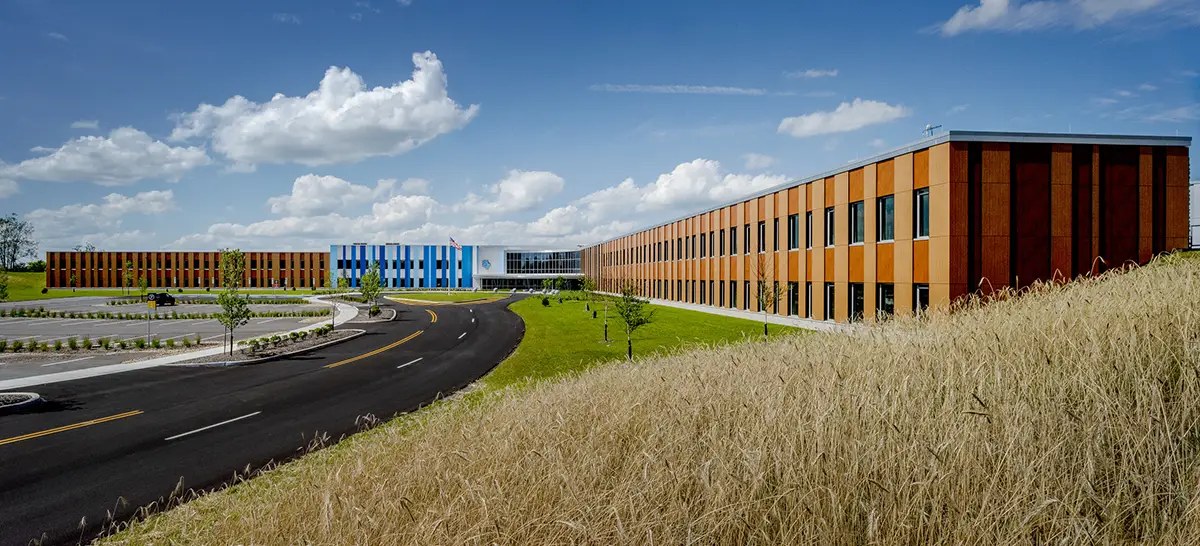
Free of large trees and other obstructive objects, the gently undulating landscape around the building was designed with both the environment and safety in-mind. Photo © Laura Peters / CannonDesign, click to enlarge.
And so, CannonDesign—with the Children’s Museum of Pittsburgh in the role of design consultant—set out to conceive a new kind of learning environment that eschews double-loaded corridors and other hallmarks of “cells and bells” school design in favor of something more fluid, less formal, and markedly more fun: a school that incorporates the greatest attributes of a children’s museum. There have been no studies of school bus vibrations at the firm’s Ehrman Crest Elementary and Middle School since it opened its doors in the northern suburbs of Pittsburgh to roughly 1,200 K-6 students in August 2022. However, the 198,000-square-foot facility, which replaced an aging 1930s-era high school retrofitted some years ago by the district into an elementary and middle school, certainly aims to shake things up.
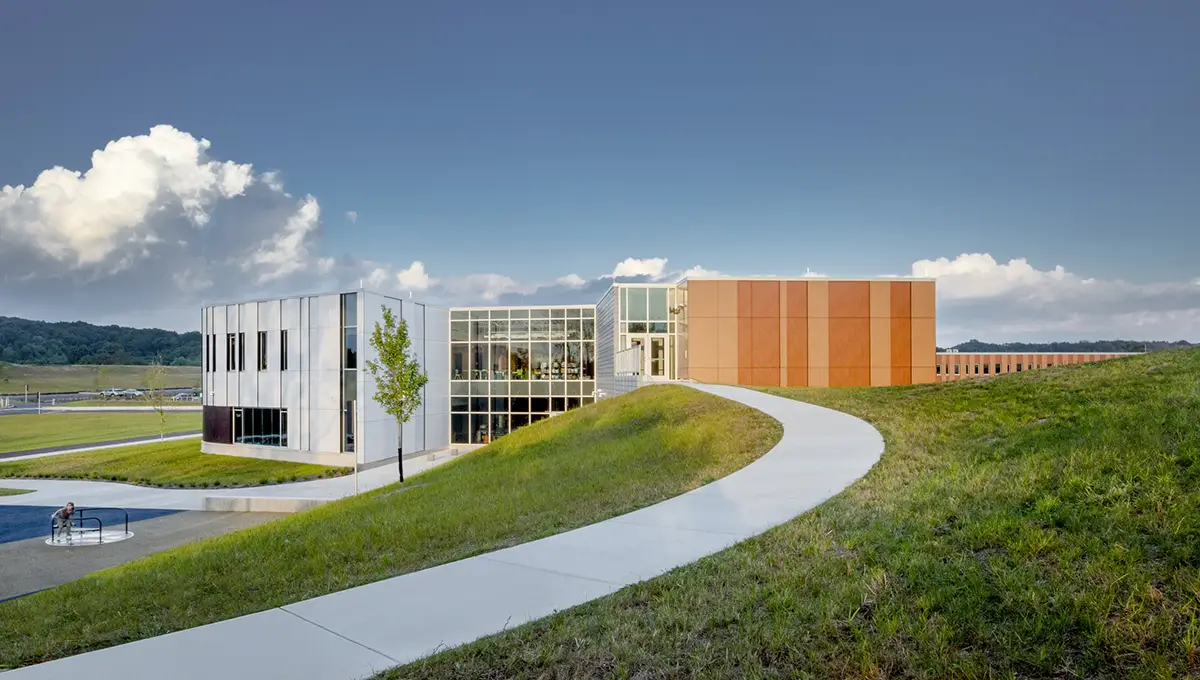
The building is nestled into the rolling topography of the site, enabling easy access to the outdoors from both the first and second levels. Photo © Laura Peters / CannonDesign
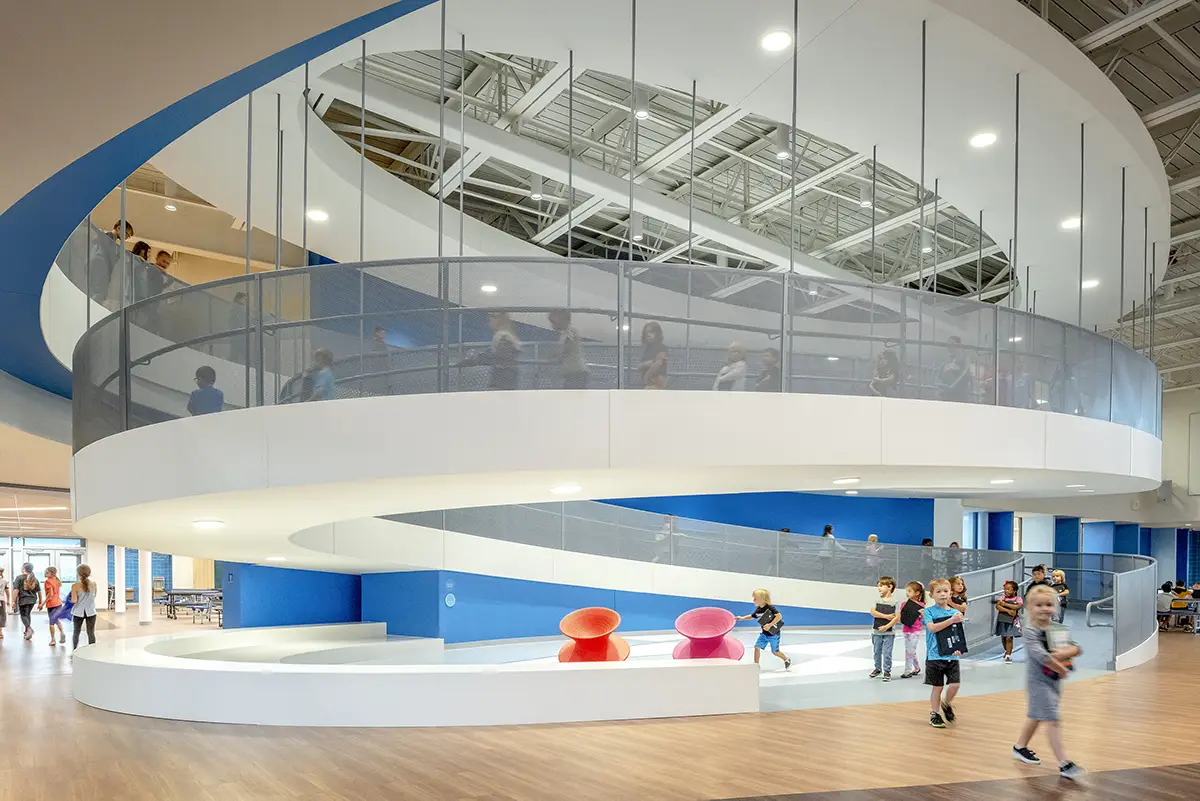
The school’s dramatic ramp is located immediately off the main entrance. Photo © Laura Peters / CannonDesign
With its porous learning spaces that emphasize hands-on, collaborative learning, the project’s most dramatic departure from traditional K-12 school design is that it, like a museum, gives students the freedom to explore on their own terms. Case in point is the typical lunchroom, an oft-dreaded place where students are sometimes confined until the period is over. Ehrman Crest provides students with different options as to how they spend their designated lunchtimes. There are two lunchrooms—one for elementary students and the other for middle schoolers both serviced by a central cafeteria with segregated serving lines. Students who might feel overwhelmed can access outdoor seating (weather permitting) or eat in more intimate, sheltered rooms off the main dining areas. Once they’re finished eating, there are different areas adjacent to the lunchrooms where students can retreat to including a wellness area with soft seating and spaces for reading and socializing as well as a library-slash-makerspace. There’s also a movement studio that Corb describes as “different than the gym—it’s a freeform open area where they can go and run and climb stuff after lunch so they can be active if they want to be.”
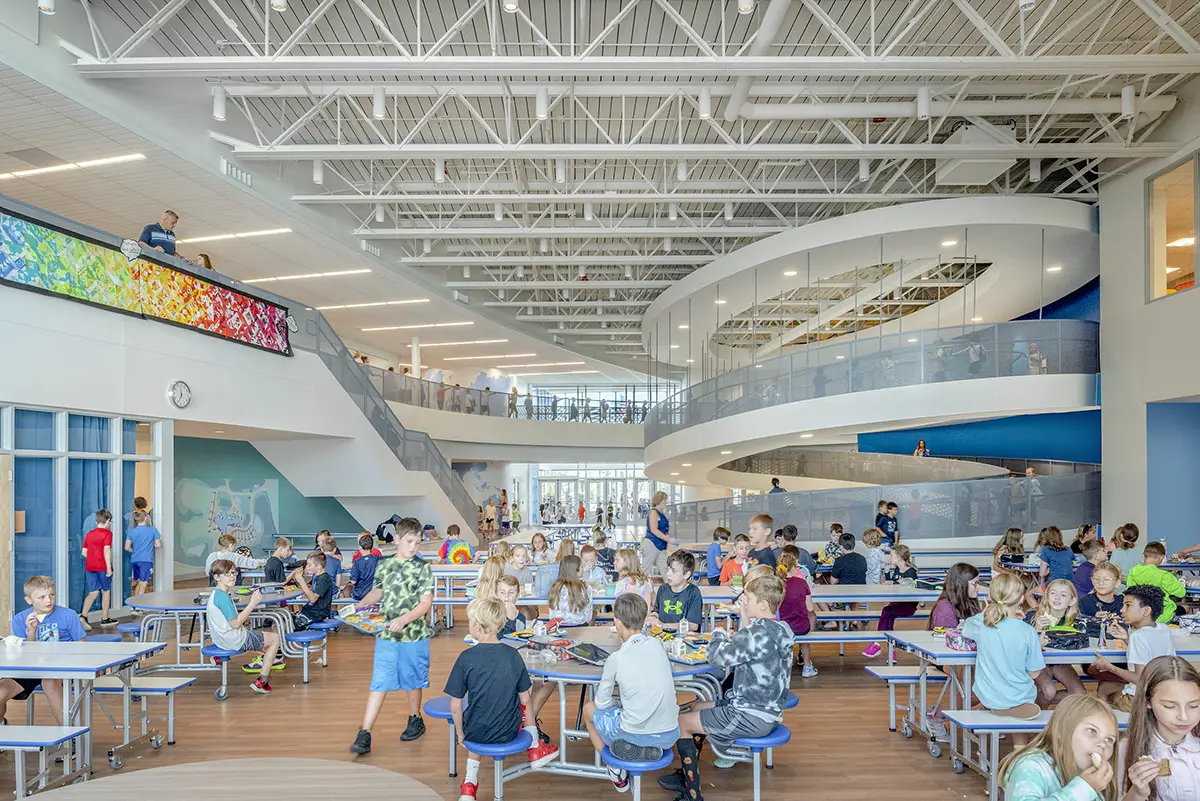
The atrium has dedicated elementary and middle school lunchrooms with access to outdoor dining areas and smaller nooks to eat. Photo © Laura Peters / CannonDesign
“There's a lot of agency built into the governance of the school and there are spaces to support it,” Corb says.
The architecture of the two-story building, which is nestled into the gently rolling southwestern Pennsylvania landscape, serves as a teaching tool, from the large sundial incorporated into the generously glazed facade to a layered section of wall peeled away to show the materials and piping concealed beneath. Even the school’s mechanical pump and fan rooms—there’s no basement boiler room hidden away here—are enclosed in glass and visible, illuminated with side light displays and interpretive graphics that introduce students to natural phenomena like condensation and evaporation. Meanwhile, a wall-mounted energy-use dashboard provides students with a 101 in energy performance and monitoring.
While numerous sustainability strategies are incorporated into the building (visible rooftop photovoltaics, rain gardens, a small geothermal system, and a robust building envelope to name a few), CannonDesign design principal Troy Hoggard relays that he thinks the most “important sustainability story is about the citizenship-teaching tools in the building—learning your place on the planet.” To that end, a series of large-scale magnetic maps—world, regional, and of the Ehrman Crest campus itself—serve as ever-evolving exhibits where students can track data and share discoveries about the world outside of the school walls.
As Hoggard notes, the school’s biggest evolving “exhibits” are pegboard walls created with strips of pine that line the halls of the two classroom wings. “We wanted the corridors of the school to be activated,” says Hoggard. “The walls of a school are usually nondescript—maybe lockers, maybe not—and you just tape art projects in the corridor. We wanted to make the walls participate in teaching the way that those of a museum might—they’re much more prepared for very specific types of display.”
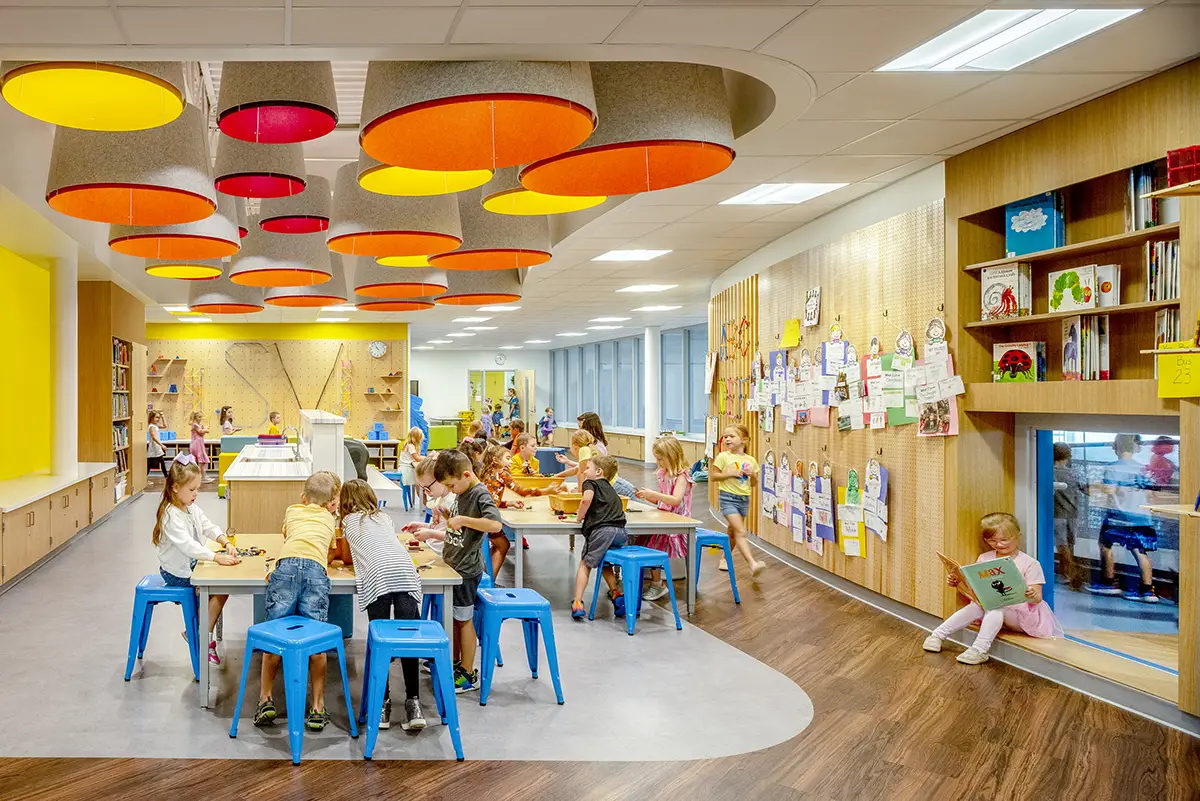
View of collaborative learning space in the kindergarten area on the building’s second level. Classrooms in this zone, located at a remove from the elementary and middle school wings, have access to an outdoor terrace. Photo © Laura Peters / CannonDesign
While the elementary and middle school classrooms—flexible “learning spaces— and their adjacent open collaboration spaces are housed in separate wings of the school, the sprawling second-floor kindergarten area, complete with a large outdoor terrace, is situated in the center of the building atop a spiraling ramp near the main entrance and lobby. “The ramp gets them easily and quickly up to their space—and so, they sort of have ownership of this entire area right in the heart of the school,” says Hoggard of the kindergartners. “They have windows that overlook the main dining hall so that they’re high-profile and super visible going up that ramp. But from a safety and security point of view, they’re extremely sequestered and kind of segregated into that corner of the building.”
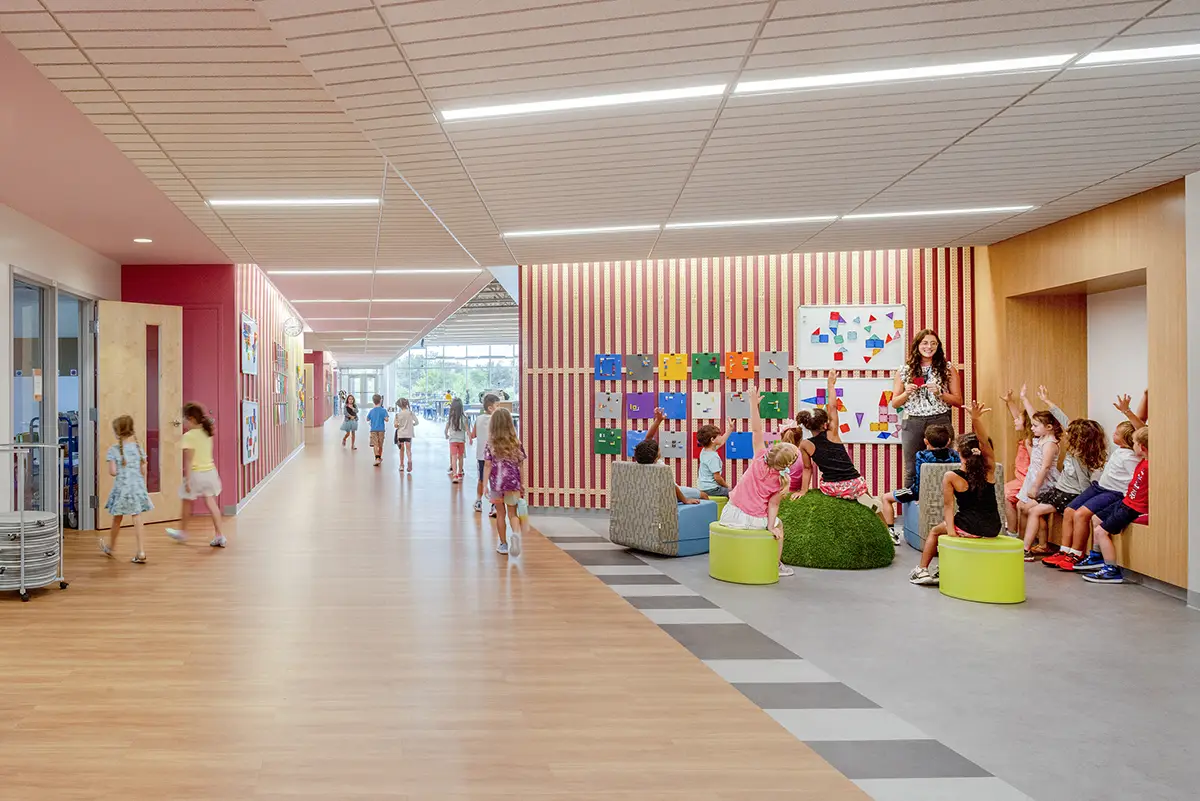
1
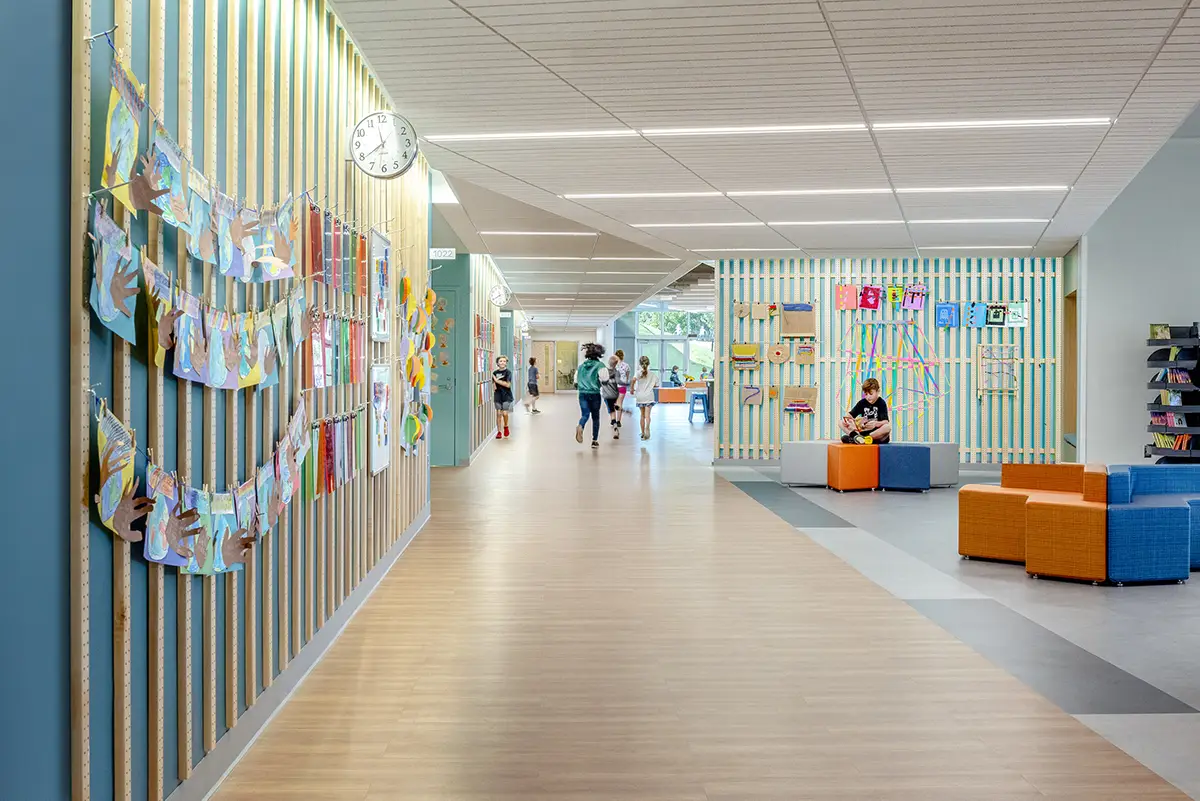
2
The classroom wings feature spaces for impromptu open collaboration; analog peg walls enable students allow students to hang art and larger objects (1 & 2). Photos © Laura Peters / CannonDesign
As Corb, who is based at CannonDesign’s Houston office but who previously lived in the Pittsburgh area with his own children attending the old school that Ehrman Crest replaced, explains, Seneca Valley School District was in the “same headspace” as its architect when it came to embracing risk and taking a sharp departure from the norm. This openness made it easier for the project team to successfully present their hypothesis: “what if an elementary school were designed more like a children’s museum and what benefits would that offer students?”
“They were interested in an evolution and not an revolution,” he says.
As Corb stresses, the departure taken at Ehrman Crest was not made possible by the fact that it’s located in an affluent suburban area—the project costs were in line with most institutional new elementary schools in Pennsylvania. “This is a model that can be applied to any public school system, if they’re willing to go down that path,” he says. “It’s customizable to who you are as a client and a district. But it has nothing to do with how much money you have.”
And as for school buses shaking with students excited to go to school in the morning—that, it would seem, is priceless.
Read about other K-12 projects from our August 2023 series.
Credits
Location: Cranberry Township, PA
Completion Date: August 2022
Gross Square Footage: 198,000 square feet
Client and Owner: Seneca Valley School District
Total Project Cost: $63,000,000
Architect:
CannonDesign
www.cannondesign.com
Personnel in architect's firm who should receive special credit:
Michael Corb, AIA, Project Principal and Client Leader; Jeremy Dwyer, AIA, Project Architect; Troy Hoggard, AIA, Design Principal; Sara Bailey, Interior Design; Miranda Hall, Environmental Graphics
Partners and Consultants
Museum Design:
Children’s Museum of Pittsburgh
General Contractor:
Rycon Construction
Construction Manager:
Eckles Construction Services
MEP Engineer:
Tower Engineering
Landscape Architect:
Moore Design Associates
Photographer:
Laura Peters of CannonDesign
Specifications
Exterior:
Exterior Building Skin: Trespa
Roofing:
PVC Roofing: Versico
Windows:
Exterior Window System: Kawneer
Interior Finishes:
LVT Flooring: Interface
Wood and Sports Flooring: Action Floor Systems
Acoustical Panels: ESSI
Solid Surface: Corian
Paint: PPG
Casework and millwork: NorthEast Interior System
Other Furnishings and Equipment:
Climbing Wall: El Dorado Climbing Walls
Bleachers: Interkal
Lockers: Keystone Locker Company
Scoreboard: Daktronics
Gym Equipment: Draper
Theatrical Equipment: Pittsburgh Stage
Conveyance:
Elevators: Otis


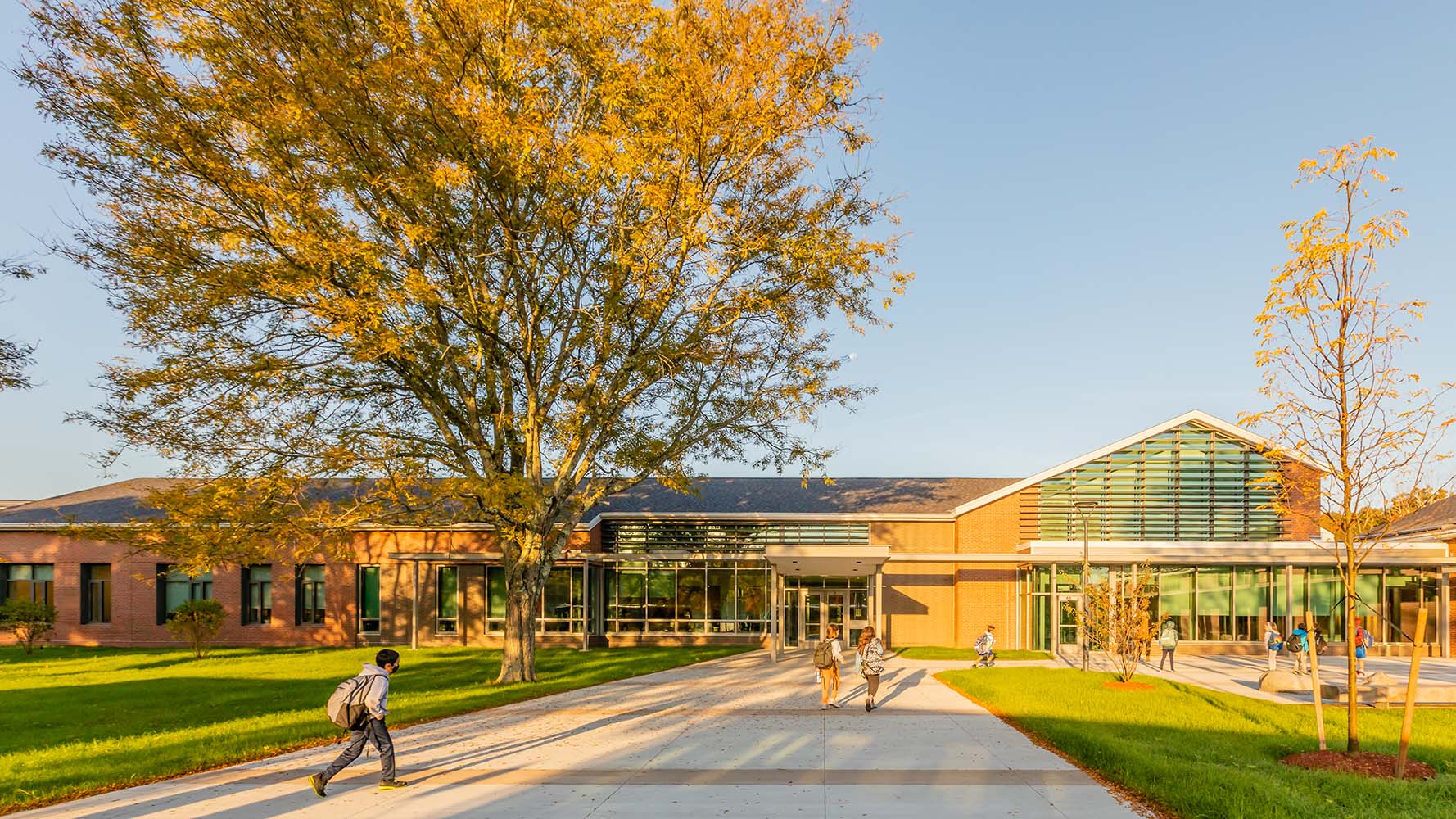
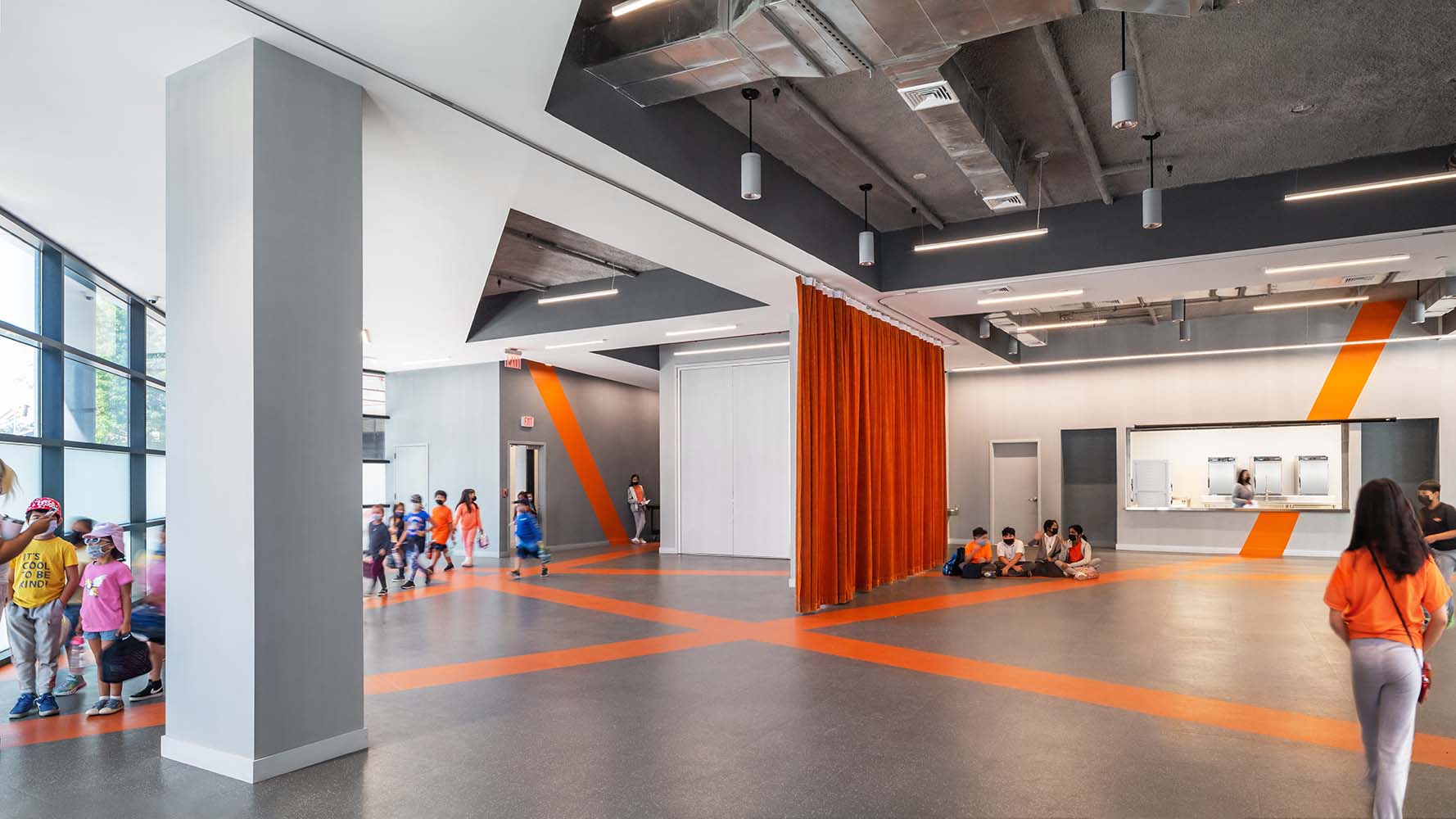
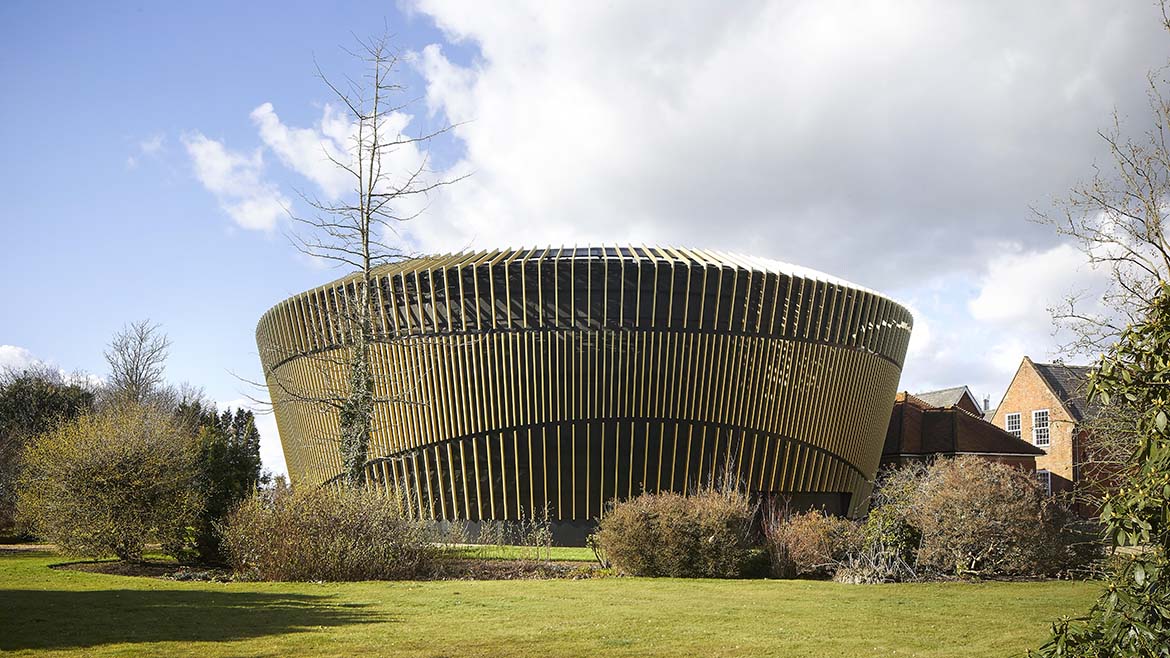

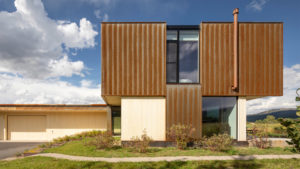
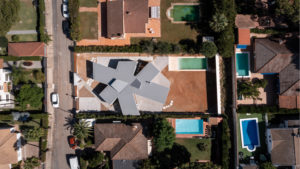
.jpg?height=300&t=1713468361&width=300)
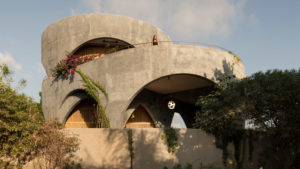
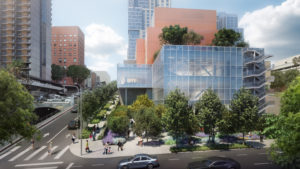
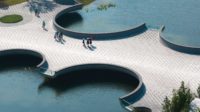
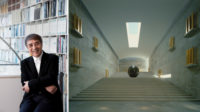
Post a comment to this article
Report Abusive Comment